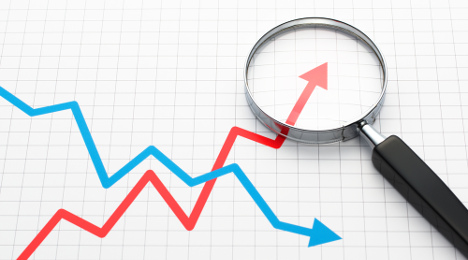September default rate ties year-high

The auto default reading S&P Dow Jones Indices and Experian reported for September tied the highest mark of the year, coming in at 1.05 percent.
Ticking up 4 basis points on a sequential basis left the September reading at the same point analysts spotted back in February. To find a reading higher, you have to go back to February of last year, when it stood at 1.06 percent.
September’s uptick extended the auto default rise to four months in a row, mirroring a similar pattern seen last year when this portion of the S&P/Experian Consumer Credit Default Indices also increased during four consecutive months before plateauing and eventually retreating back to the recent low point registered back in June (0.91 percent).
Meanwhile the composite reading — a comprehensive measure of changes in consumer credit defaults — stood at 0.84 percent in September, which was 1 basis point lower than the previous month and 5 basis points lower than a year earlier.
Data through September indicated the first mortgage default rate also dropped by 1 basis point to 0.67 percent while the bank card default rate hit a seven-month low at 2.76 percent, down 10 basis points from last month.
Analysts noticed four of the five major cities saw their default rates decrease in September.
Miami had the largest decrease, reporting at 1.12 percent, down 9 basis points from August.
Chicago saw its default rate decrease by 6 basis points to 0.87 percent in September, and New York reported a decrease to 0.86 percent, down 5 basis points from the previous month.
Los Angeles posted a default rate of 0.59 percent, down 1 basis point for the month.
Dallas was the only city unchanged from last month at 0.74 percent.
“Data from the Federal Reserve shows that consumer credit outstanding continues to expand,” said David Blitzer, managing director and chairman of the index committee at S&P Dow Jones Indices.
“After increasing by 7.2 percent in 2014 and 7.0 percent in 2015, growth this year is running at an annual rate of 6 percent to 7 percent,” Blitzer continued. “Despite the continued growth in total consumer credit extended and the currently very low interest rates, we are not seeing any deterioration in consumer credit defaults.
Rather, the default rates for major categories and for the five cities highlighted in this report continue to drift down to the lowest figures seen in 12 years,” he added.
Blitzer elaborated about what’s triggering those developments.
“Among the factors supporting the favorable trends in consumer credit defaults are the economy’s underlying growth and continuing gains in employment, increases in personal income and low inflation,” he said.
“A rare decline in mortgage debt outstanding and slower growth in consumer credit following the 2007-2009 recession contributed to improvements in consumers' financial condition which has been sustained in the last few years,” Blitzer went on to say.
Jointly developed by S&P Indices and Experian, analysts reiterated the S&P/Experian Consumer Credit Default Indices are published monthly with the intent to accurately track the default experience of consumer balances in four key loan categories: auto, bankcard, first mortgage lien and second mortgage lien.
The indices are calculated based on data extracted from Experian’s consumer credit database. This database is populated with individual consumer loan and payment data submitted by lenders to Experian every month.
Experian’s base of data contributors includes leading banks and mortgage companies and covers approximately $11 trillion in outstanding loans sourced from 11,500 lenders.

 View The Latest Edition
View The Latest Edition

